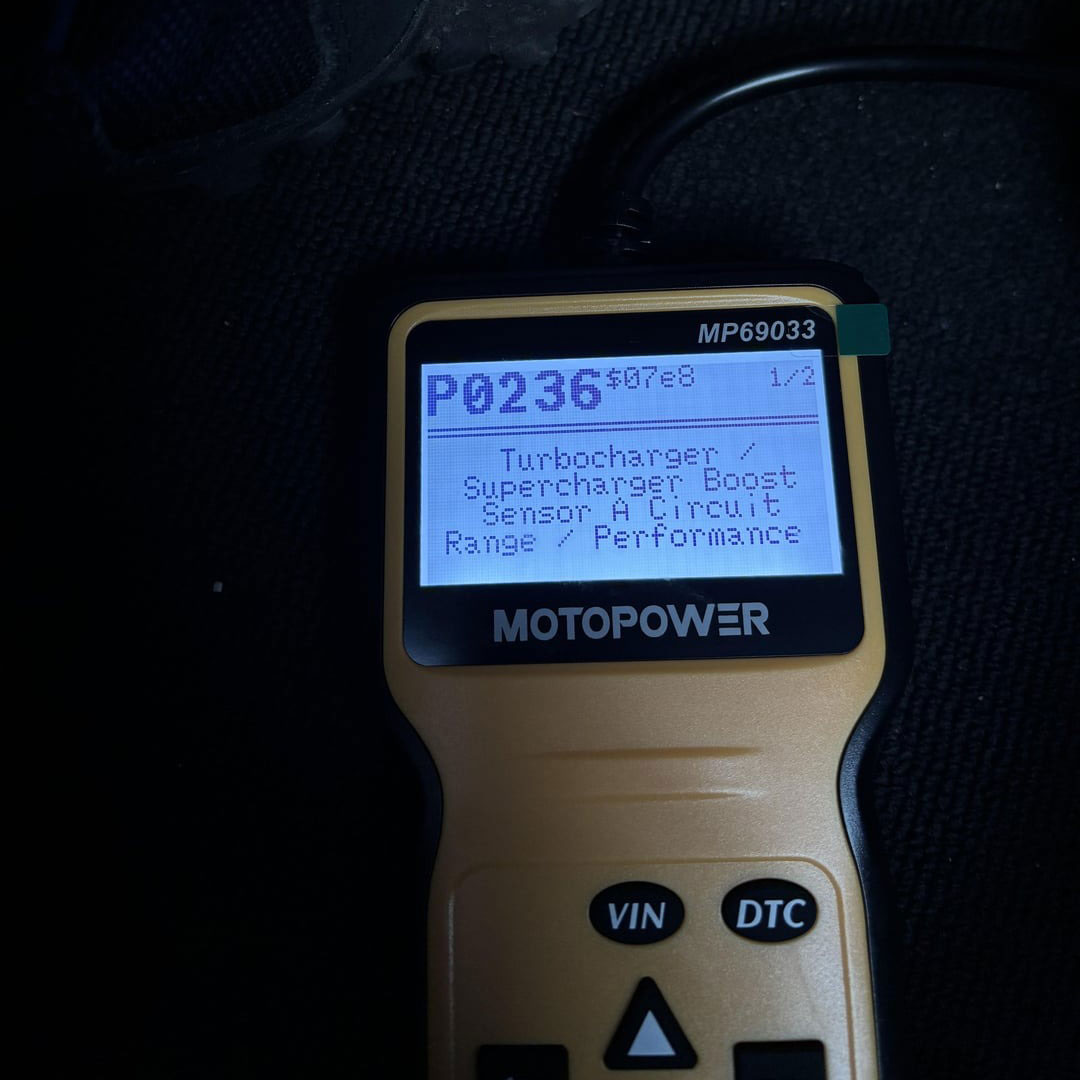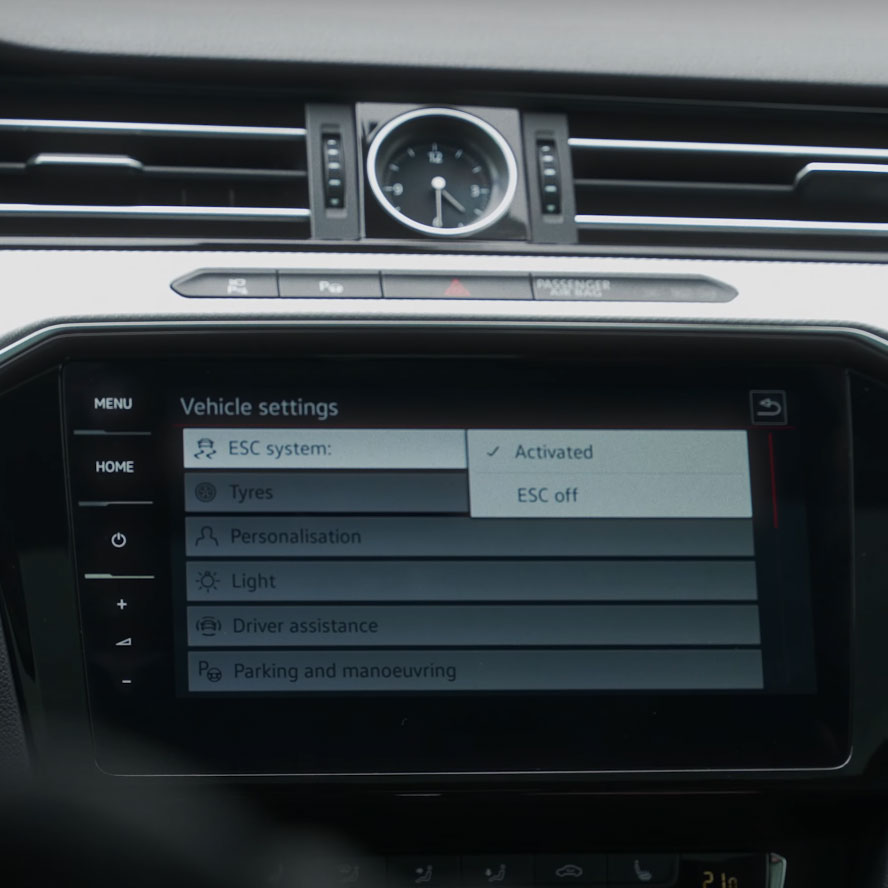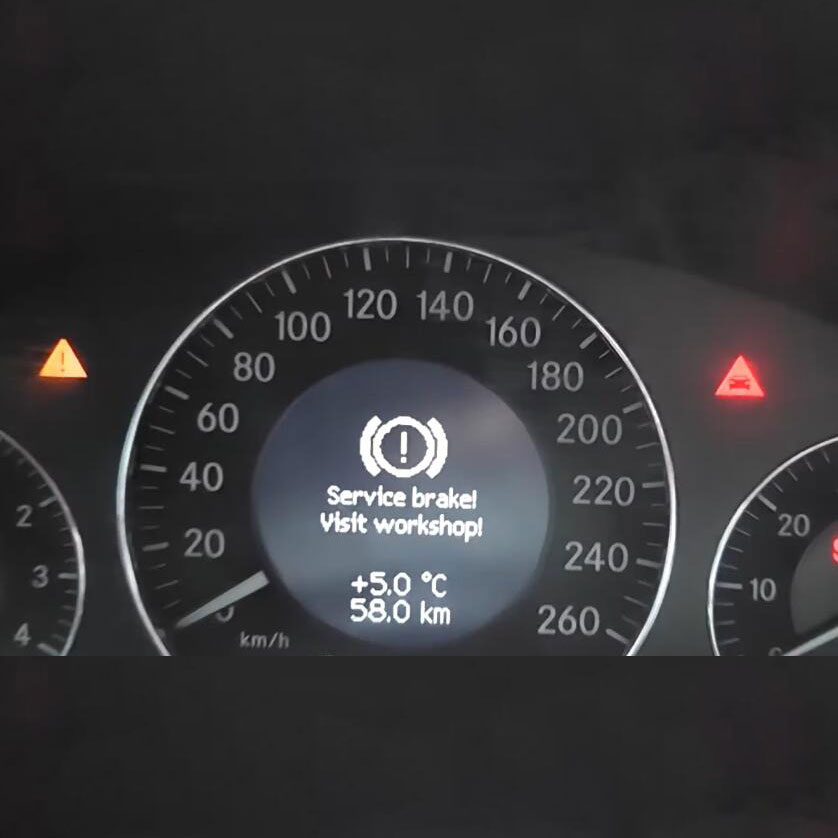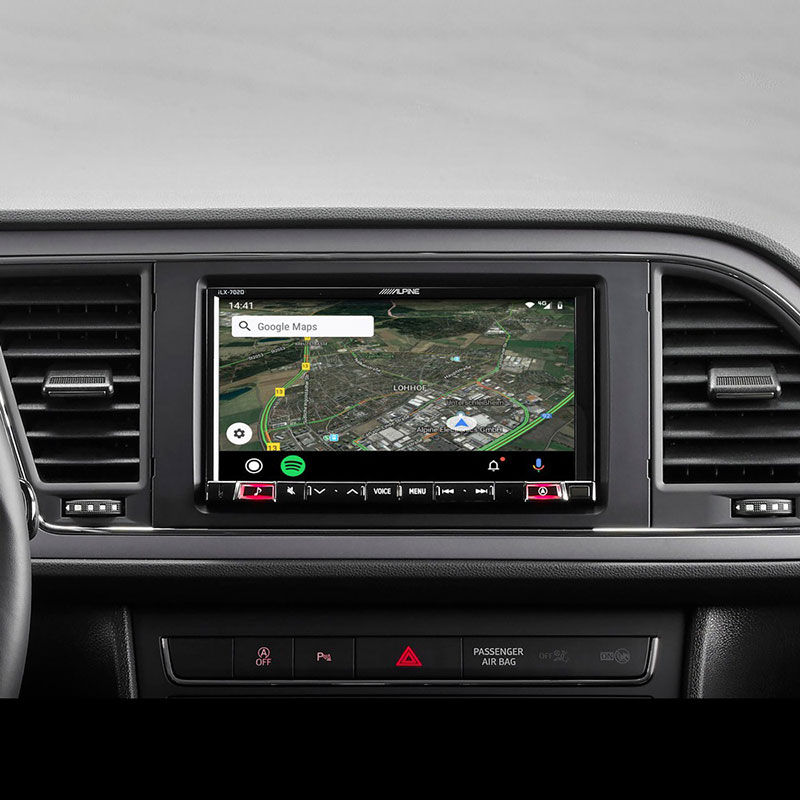
Audi DTC P0300:01/000768:001 – Comprehensive Troubleshooting Guide
Contents
- 1. Understanding the Audi DTC P0300:01/000768:001 Error Code
- 1.1. What Does Misfire Mean?
- 1.2. The Significance of “Random/Multiple Cylinder Misfire Detected”
- 1.3. Decoding the Error Code: P0300:01/000768:001
- 1.4. Impact on Engine Performance and Emissions
- 2. Identifying the Root Causes of Audi DTC P0300:01/000768:001
- 2.1. Common Culprits Behind Misfires
- 2.2. The Role of Faulty Ignition Components
- 2.3. Fuel Delivery Complications
- 2.4. Vacuum Leaks and Their Impact on Air-Fuel Mixture
- 2.5. Compression Issues: A Sign of Engine Wear
- 2.6. Sensor Malfunctions and Erroneous Data
- 2.7. Timing Issues: A Synchronization Problem
- 2.8. Exhaust System Restrictions
- 2.9. PCV System Failure
- 2.10. Carbon Buildup in Direct Injection Engines
- 2.11. ECU Problems
- 3. Step-by-Step Diagnostic Procedures for Audi DTC P0300:01/000768:001
- 3.1. Essential Tools and Equipment
- 3.2. Initial Inspection and Code Verification
- 3.3. Visual Inspection of Engine Components
- 3.4. Ignition System Testing
- 3.5. Fuel System Evaluation
- 3.6. Vacuum Leak Detection
- 3.7. Compression Testing
- 3.8. Sensor Diagnostics
- 3.9. PCV System Check
- 3.10. Advanced Diagnostics with Scan Tools
- 3.11. Ruling Out Catalytic Converter Issues
- 4. Repairing Audi DTC P0300:01/000768:001: Practical Solutions
- 4.1. Addressing Ignition System Problems
- 4.2. Resolving Fuel Delivery Issues
- 4.3. Fixing Vacuum Leaks
- 4.4. Rectifying Compression Problems
- 4.5. Correcting Sensor Malfunctions
- 4.6. Restoring Proper Timing
- 4.7. Clearing Exhaust Restrictions
- 4.8. Servicing the PCV System
- 4.9. Cleaning Carbon Buildup
- 4.10. Addressing ECU Issues
- 5. Advanced Techniques: Coding and Programming for Optimal Performance
- 5.1. When is Coding/Programming Needed?
- 5.2. The Role of AutoExplain in Advanced Diagnostics
- 5.3. Benefits of Professional Coding and Programming
- 5.4. AutoExplain’s Expertise in Audi Coding and Programming
- 5.5. Ensuring Compatibility and Optimal Functionality
- 6. Preventive Maintenance to Avoid Future Misfires
- 6.1. Regular Spark Plug Replacement
- 6.2. Fuel System Maintenance
- 6.3. Vacuum Leak Inspection
- 6.4. Engine Compression Monitoring
- 6.5. Sensor Health Checks
- 6.6. Timing Belt/Chain Service
- 6.7. Regular Oil Changes
- 6.8. Addressing Carbon Buildup
- 6.9. Scheduled Maintenance and Inspections
- 7. Success Stories: Real-World Examples of P0300:01/000768:001 Resolution
- 7.1. Case Study 1: Spark Plug and Ignition Coil Replacement
- 7.2. Case Study 2: Vacuum Leak Repair
- 7.3. Case Study 3: Fuel Injector Cleaning and Replacement
- 8. The Expertise of AutoExplain: Your Partner in Audi Diagnostics and Repair
- 8.1. Comprehensive Diagnostic Services
- 8.2. Remote Diagnostic and Programming Capabilities
- 8.3. Experienced Technicians and Cutting-Edge Technology
- 8.4. Commitment to Customer Satisfaction
- 8.5. Contact Information and Support Resources
- 9. Addressing the Intent of The User
- 10. Frequently Asked Questions (FAQ) About Audi DTC P0300:01/000768:001
- 10.1. What Does the P0300:01/000768:001 Code Mean on My Audi?
- 10.2. Can I Drive My Audi with a P0300:01/000768:001 Code?
- 10.3. What are the Common Symptoms of a P0300:01/000768:001 Code?
- 10.4. How Do I Diagnose a P0300:01/000768:001 Code?
- 10.5. What Tools Do I Need to Diagnose a P0300:01/000768:001 Code?
- 10.6. Can a Faulty Oxygen Sensor Cause a P0300:01/000768:001 Code?
- 10.7. How Can AutoExplain Help Me Resolve a P0300:01/000768:001 Code?
- 10.8. Is Coding and Programming Necessary to Fix a P0300:01/000768:001 Code?
- 10.9. How Can I Prevent a P0300:01/000768:001 Code from Recurring?
- 10.10. Where Can I Find Reliable Information About Audi Repair and Maintenance?
Is your Audi A4 2007 showing a P0300:01/000768:001 error code? This guide, brought to you by AutoExplain, will help you diagnose and fix the random/multiple cylinder misfire detected, ensuring your Audi runs smoothly again.
1. Understanding the Audi DTC P0300:01/000768:001 Error Code
The Audi DTC P0300:01/000768:001 error code indicates that the engine control unit (ECU) has detected random or multiple misfires in the engine cylinders. These misfires can lead to rough idling, reduced power, poor fuel economy, and potentially damage to the catalytic converter. This comprehensive guide aims to help you understand the intricacies of this error code, its potential causes, diagnostic steps, and effective solutions, empowering you to restore your Audi’s optimal performance.
1.1. What Does Misfire Mean?
A misfire occurs when one or more cylinders in an engine fail to produce complete combustion. This can happen for various reasons, preventing the piston from receiving the full force of the explosion needed to drive the engine.
1.2. The Significance of “Random/Multiple Cylinder Misfire Detected”
This specific description means the misfire isn’t isolated to a single cylinder but is occurring randomly across multiple cylinders. It suggests a problem affecting the entire engine rather than a specific component linked to one cylinder.
1.3. Decoding the Error Code: P0300:01/000768:001
- P0300: This is the generic OBD-II code indicating “Random/Multiple Cylinder Misfire Detected.”
- 01: This subcode often indicates the type of failure or the specific system affected. In this case, it may refer to a general failure or initial detection of the misfire.
- 000768: This is the specific fault code used by Audi/VW to further pinpoint the issue.
- 001: This is a counter or flag indicating how many times the fault has occurred.
1.4. Impact on Engine Performance and Emissions
Misfires directly affect engine performance, leading to:
- Reduced power and acceleration
- Rough idling or stalling
- Increased fuel consumption
- Higher emissions, potentially causing the vehicle to fail emissions tests
- Damage to the catalytic converter due to unburnt fuel entering the exhaust system.
2. Identifying the Root Causes of Audi DTC P0300:01/000768:001
Several factors can contribute to random or multiple cylinder misfires. Identifying the root cause is crucial for effective repair.
2.1. Common Culprits Behind Misfires
| Cause | Description |
|---|---|
| Ignition System Issues | Faulty spark plugs, ignition coils, or wiring can prevent proper spark generation. |
| Fuel System Problems | Problems with fuel injectors, fuel pump, fuel filter, or fuel pressure regulator can disrupt fuel delivery. |
| Vacuum Leaks | Leaks in vacuum lines, intake manifold gaskets, or PCV system can alter the air-fuel mixture. |
| Compression Issues | Worn piston rings, damaged valves, or a blown head gasket can reduce cylinder compression. |
| Sensor Malfunctions | Faulty mass airflow (MAF) sensor, oxygen (O2) sensors, or crankshaft position sensor can provide incorrect data to the ECU. |
| Timing Issues | A worn or improperly installed timing belt or chain can cause timing misalignment. |
| Exhaust System Restrictions | A clogged catalytic converter or other exhaust restriction can increase backpressure and cause misfires. |
| PCV System Failure | A malfunctioning PCV valve can cause vacuum leaks and disrupt the air-fuel mixture. |
| Carbon Buildup | Excessive carbon deposits on intake valves can disrupt airflow and cause misfires, particularly in direct injection engines. |
| ECU Problems | In rare cases, a faulty ECU can cause misfires. |
2.2. The Role of Faulty Ignition Components
Spark plugs and ignition coils are vital for igniting the air-fuel mixture. Worn or damaged components can lead to weak or nonexistent sparks.
- Spark Plugs: Over time, spark plugs wear out, becoming fouled with deposits or developing cracks.
- Ignition Coils: These can fail due to heat, vibration, or electrical stress, resulting in a weak or nonexistent spark.
2.3. Fuel Delivery Complications
Proper fuel delivery is essential for combustion. Issues in the fuel system can starve cylinders of fuel or deliver too much.
- Fuel Injectors: These can become clogged, preventing proper fuel atomization.
- Fuel Pump: A failing fuel pump can deliver insufficient fuel pressure, especially under load.
- Fuel Filter: A clogged fuel filter restricts fuel flow.
- Fuel Pressure Regulator: A faulty regulator can cause improper fuel pressure.
2.4. Vacuum Leaks and Their Impact on Air-Fuel Mixture
Vacuum leaks allow unmetered air to enter the engine, leaning out the air-fuel mixture.
- Vacuum Lines: These can crack or become disconnected over time.
- Intake Manifold Gaskets: These can deteriorate, creating leaks between the intake manifold and cylinder head.
- PCV System: A faulty PCV valve or hoses can cause vacuum leaks.
2.5. Compression Issues: A Sign of Engine Wear
Adequate cylinder compression is necessary for proper combustion. Low compression indicates a problem within the cylinder.
- Worn Piston Rings: These can allow combustion gases to leak past the pistons, reducing compression.
- Damaged Valves: Bent or burnt valves can prevent a tight seal, reducing compression.
- Blown Head Gasket: A blown head gasket can allow compression to leak between cylinders or into the cooling system.
2.6. Sensor Malfunctions and Erroneous Data
Engine sensors provide critical data to the ECU. Faulty sensors can provide incorrect data, leading to misfires.
- Mass Airflow (MAF) Sensor: Measures the amount of air entering the engine. A faulty MAF sensor can cause the ECU to miscalculate the air-fuel mixture.
- Oxygen (O2) Sensors: Monitor the oxygen content in the exhaust. Faulty O2 sensors can cause the ECU to adjust the air-fuel mixture incorrectly.
- Crankshaft Position Sensor: Provides information about the crankshaft’s position and speed. A faulty sensor can disrupt timing and fuel delivery.
2.7. Timing Issues: A Synchronization Problem
Proper engine timing ensures that valves open and close at the correct time relative to piston position.
- Worn Timing Belt/Chain: These can stretch or break, causing timing misalignment.
- Improper Installation: Incorrect installation of the timing belt/chain can lead to timing issues.
2.8. Exhaust System Restrictions
A clogged exhaust system can create backpressure, preventing proper cylinder filling.
- Catalytic Converter: Over time, catalytic converters can become clogged, restricting exhaust flow.
- Other Restrictions: Dents or damage to the exhaust system can also create restrictions.
2.9. PCV System Failure
The PCV system regulates crankcase pressure. A faulty PCV valve can cause vacuum leaks and disrupt the air-fuel mixture.
- PCV Valve: This can become stuck open or closed, causing pressure imbalances.
- PCV Hoses: These can crack or become disconnected, causing vacuum leaks.
2.10. Carbon Buildup in Direct Injection Engines
Direct injection engines are prone to carbon buildup on intake valves because fuel is injected directly into the cylinder, bypassing the valves.
- Intake Valves: Carbon deposits can disrupt airflow, leading to misfires.
2.11. ECU Problems
While rare, the ECU itself can be the source of misfires.
- Faulty ECU: The ECU may miscalculate fuel delivery or ignition timing.
3. Step-by-Step Diagnostic Procedures for Audi DTC P0300:01/000768:001
Diagnosing the P0300:01/000768:001 error code requires a systematic approach. Here’s a step-by-step guide:
3.1. Essential Tools and Equipment
- OBD-II Scanner: To read and clear diagnostic trouble codes (DTCs).
- Multimeter: To test electrical components.
- Compression Tester: To measure cylinder compression.
- Fuel Pressure Tester: To measure fuel pressure.
- Vacuum Gauge: To measure engine vacuum.
- Spark Plug Socket and Wrench: To remove and inspect spark plugs.
- Basic Hand Tools: Wrenches, sockets, screwdrivers, etc.
- Scan Tool with Live Data Capability: This tool can show you real-time data from the engine’s sensors.
- Smoke Machine: This tool can help you find vacuum leaks.
3.2. Initial Inspection and Code Verification
- Connect the OBD-II scanner: Plug the scanner into the OBD-II port and retrieve all stored DTCs.
- Record the Freeze Frame Data: Note the engine conditions when the code was set (RPM, load, etc.).
- Clear the Codes: Clear the codes and see if the P0300:01/000768:001 code returns.
3.3. Visual Inspection of Engine Components
- Check for Obvious Issues: Look for damaged vacuum lines, disconnected hoses, or signs of leaks.
- Inspect Wiring: Check the wiring to the ignition coils, fuel injectors, and sensors for damage or corrosion.
3.4. Ignition System Testing
- Spark Plug Inspection: Remove the spark plugs and inspect their condition. Look for signs of wear, fouling, or damage.
- Ignition Coil Testing: Use a multimeter to test the resistance of the ignition coils. Compare the readings to the manufacturer’s specifications.
3.5. Fuel System Evaluation
- Fuel Pressure Testing: Use a fuel pressure tester to measure fuel pressure at the fuel rail. Compare the reading to the manufacturer’s specifications.
- Fuel Injector Testing: Use a multimeter to test the resistance of the fuel injectors. You can also listen to them with a stethoscope to ensure they are clicking.
3.6. Vacuum Leak Detection
- Visual Inspection: Check vacuum lines and hoses for cracks or disconnections.
- Smoke Test: Use a smoke machine to introduce smoke into the intake system and look for leaks.
- Listen for Hissing: Listen for hissing sounds that may indicate a vacuum leak.
3.7. Compression Testing
- Prepare the Engine: Warm up the engine and disable the ignition system and fuel injectors.
- Perform the Test: Remove each spark plug and insert the compression tester into the spark plug hole. Crank the engine and record the compression reading.
- Analyze the Results: Compare the readings to the manufacturer’s specifications. Low compression in one or more cylinders indicates a problem.
3.8. Sensor Diagnostics
- MAF Sensor Testing: Use a scan tool to monitor the MAF sensor’s readings. Compare the readings to the manufacturer’s specifications.
- O2 Sensor Testing: Use a scan tool to monitor the O2 sensor’s readings. The sensors should fluctuate between rich and lean.
- Crankshaft Position Sensor Testing: Use a multimeter to test the resistance of the crankshaft position sensor. Compare the reading to the manufacturer’s specifications.
3.9. PCV System Check
- Inspect the PCV Valve: Remove the PCV valve and inspect it for damage or blockage.
- Check PCV Hoses: Inspect the PCV hoses for cracks or disconnections.
3.10. Advanced Diagnostics with Scan Tools
- Live Data Analysis: Use a scan tool to monitor live engine data, such as RPM, load, fuel trim, and sensor readings.
- Component Testing: Use a scan tool to perform component tests, such as fuel injector activation and ignition coil testing.
3.11. Ruling Out Catalytic Converter Issues
- Check for Restrictions: Use a backpressure tester to check for excessive backpressure in the exhaust system.
- Visual Inspection: Inspect the catalytic converter for damage or signs of overheating.
4. Repairing Audi DTC P0300:01/000768:001: Practical Solutions
Once you’ve identified the root cause, it’s time to implement the necessary repairs.
4.1. Addressing Ignition System Problems
- Replacing Spark Plugs: Replace worn or fouled spark plugs with new ones that meet the manufacturer’s specifications.
- Replacing Ignition Coils: Replace faulty ignition coils with new ones.
- Repairing Wiring: Repair or replace damaged wiring to the ignition coils.
4.2. Resolving Fuel Delivery Issues
- Cleaning or Replacing Fuel Injectors: Clean clogged fuel injectors or replace them with new ones.
- Replacing Fuel Pump: Replace a failing fuel pump with a new one.
- Replacing Fuel Filter: Replace a clogged fuel filter with a new one.
- Replacing Fuel Pressure Regulator: Replace a faulty fuel pressure regulator with a new one.
4.3. Fixing Vacuum Leaks
- Replacing Vacuum Lines: Replace cracked or disconnected vacuum lines with new ones.
- Replacing Intake Manifold Gaskets: Replace deteriorated intake manifold gaskets with new ones.
- Repairing PCV System: Replace a faulty PCV valve or hoses.
4.4. Rectifying Compression Problems
- Engine Rebuild: Overhaul the engine to replace worn piston rings, valves, or head gasket.
4.5. Correcting Sensor Malfunctions
- Replacing MAF Sensor: Replace a faulty MAF sensor with a new one.
- Replacing O2 Sensors: Replace faulty O2 sensors with new ones.
- Replacing Crankshaft Position Sensor: Replace a faulty crankshaft position sensor with a new one.
4.6. Restoring Proper Timing
- Replacing Timing Belt/Chain: Replace a worn timing belt or chain with a new one.
- Adjusting Timing: Adjust the timing to the manufacturer’s specifications.
4.7. Clearing Exhaust Restrictions
- Replacing Catalytic Converter: Replace a clogged catalytic converter with a new one.
- Repairing Exhaust System: Repair any dents or damage to the exhaust system.
4.8. Servicing the PCV System
- Replacing PCV Valve: Replace a faulty PCV valve with a new one.
- Replacing PCV Hoses: Replace cracked or disconnected PCV hoses with new ones.
4.9. Cleaning Carbon Buildup
- Intake Valve Cleaning: Use a specialized cleaning solution or walnut blasting to remove carbon deposits from the intake valves.
4.10. Addressing ECU Issues
- ECU Replacement: Replace a faulty ECU with a new or refurbished unit.
- ECU Programming: Reprogram the ECU with the latest software.
5. Advanced Techniques: Coding and Programming for Optimal Performance
In some cases, coding and programming may be necessary to ensure optimal performance after repairs.
5.1. When is Coding/Programming Needed?
- ECU Replacement: When replacing the ECU, coding and programming are required to match the new ECU to the vehicle’s systems.
- Component Replacement: Some components, such as fuel injectors or sensors, may require coding to ensure proper communication with the ECU.
- Software Updates: Software updates can improve engine performance and address known issues.
5.2. The Role of AutoExplain in Advanced Diagnostics
AutoExplain specializes in providing remote diagnostic and programming services for vehicles, ensuring that your car receives the most up-to-date software and configurations.
5.3. Benefits of Professional Coding and Programming
- Improved Engine Performance: Coding and programming can optimize engine performance, improving power, fuel economy, and emissions.
- Enhanced Reliability: Proper coding and programming can prevent future issues and improve the overall reliability of the vehicle.
- Access to Latest Features: Software updates can provide access to the latest features and improvements.
5.4. AutoExplain’s Expertise in Audi Coding and Programming
AutoExplain offers comprehensive coding and programming services for Audi vehicles, ensuring that your car receives the best possible care. Our team of experienced technicians can diagnose and resolve complex issues, providing you with peace of mind.
5.5. Ensuring Compatibility and Optimal Functionality
AutoExplain ensures that all coding and programming is performed correctly, guaranteeing compatibility and optimal functionality.
6. Preventive Maintenance to Avoid Future Misfires
Preventive maintenance is crucial for avoiding future misfires and ensuring the long-term health of your Audi.
6.1. Regular Spark Plug Replacement
Replace spark plugs according to the manufacturer’s recommended interval.
6.2. Fuel System Maintenance
- Fuel Filter Replacement: Replace the fuel filter regularly to ensure proper fuel flow.
- Fuel Injector Cleaning: Clean fuel injectors periodically to prevent clogging.
6.3. Vacuum Leak Inspection
- Inspect Vacuum Lines: Regularly inspect vacuum lines for cracks or disconnections.
- Check PCV System: Inspect the PCV valve and hoses for damage or blockage.
6.4. Engine Compression Monitoring
- Compression Testing: Perform compression tests periodically to monitor engine health.
6.5. Sensor Health Checks
- MAF Sensor Cleaning: Clean the MAF sensor periodically to ensure accurate readings.
- O2 Sensor Monitoring: Monitor O2 sensor readings to detect potential issues.
6.6. Timing Belt/Chain Service
- Replace Timing Belt/Chain: Replace the timing belt or chain according to the manufacturer’s recommended interval.
6.7. Regular Oil Changes
- Oil Changes: Perform regular oil changes to keep the engine lubricated and prevent wear.
6.8. Addressing Carbon Buildup
- Intake Valve Cleaning: Perform intake valve cleaning periodically to remove carbon deposits.
6.9. Scheduled Maintenance and Inspections
- Follow Maintenance Schedule: Follow the manufacturer’s recommended maintenance schedule.
- Regular Inspections: Have the vehicle inspected regularly by a qualified technician.
7. Success Stories: Real-World Examples of P0300:01/000768:001 Resolution
Here are a few real-world examples of how the P0300:01/000768:001 error code was successfully resolved:
7.1. Case Study 1: Spark Plug and Ignition Coil Replacement
- Problem: A 2008 Audi A4 with 120,000 miles exhibited a P0300:01/000768:001 error code.
- Diagnosis: Inspection revealed worn spark plugs and a faulty ignition coil on cylinder 3.
- Solution: Replaced all spark plugs and the faulty ignition coil.
- Result: The misfire was resolved, and the engine ran smoothly.
7.2. Case Study 2: Vacuum Leak Repair
- Problem: A 2010 Audi A5 with 80,000 miles exhibited a P0300:01/000768:001 error code.
- Diagnosis: A smoke test revealed a vacuum leak in the intake manifold gasket.
- Solution: Replaced the intake manifold gasket.
- Result: The vacuum leak was resolved, and the misfire disappeared.
7.3. Case Study 3: Fuel Injector Cleaning and Replacement
- Problem: A 2012 Audi Q5 with 90,000 miles exhibited a P0300:01/000768:001 error code.
- Diagnosis: Fuel injector testing revealed clogged fuel injectors.
- Solution: Cleaned the fuel injectors and replaced the severely clogged ones.
- Result: The fuel delivery was restored, and the misfire was resolved.
8. The Expertise of AutoExplain: Your Partner in Audi Diagnostics and Repair
AutoExplain is your trusted partner for diagnosing and repairing complex issues in your Audi.
8.1. Comprehensive Diagnostic Services
AutoExplain offers comprehensive diagnostic services to identify the root cause of your car’s problems.
8.2. Remote Diagnostic and Programming Capabilities
AutoExplain provides remote diagnostic and programming services, allowing you to receive expert assistance from the comfort of your own home or shop.
8.3. Experienced Technicians and Cutting-Edge Technology
AutoExplain employs experienced technicians and utilizes cutting-edge technology to ensure accurate and effective repairs.
8.4. Commitment to Customer Satisfaction
AutoExplain is committed to providing exceptional customer service and ensuring your complete satisfaction.
8.5. Contact Information and Support Resources
- Address: 1500 N Grant ST Sten Denver, Colorado, United States
- WhatsApp: +1(936)2896695
- Email: [email protected]
- Website: autoexplain.com
9. Addressing the Intent of The User
Understanding the user’s intent behind searching for “Audi DTC P0300:01/000768:001” is crucial for providing relevant and helpful information. Here are five potential user intents and how this article addresses them:
-
Understanding the Error Code: Users want to know what the error code means and its potential consequences.
- How this article helps: Section 1 provides a detailed explanation of the error code, its components, and its impact on engine performance and emissions.
-
Identifying the Causes: Users want to identify the possible causes of the error code in their Audi.
- How this article helps: Section 2 lists common causes, ranging from ignition and fuel system issues to vacuum leaks and compression problems. Each cause is explained in detail.
-
Diagnosing the Problem: Users want to know how to diagnose the error code and pinpoint the root cause.
- How this article helps: Section 3 offers a step-by-step diagnostic procedure, including essential tools, visual inspections, and advanced testing techniques.
-
Repairing the Issue: Users want to find practical solutions and repair the problem themselves or understand what a mechanic needs to do.
- How this article helps: Section 4 provides detailed repair solutions for each potential cause, including component replacement, cleaning, and advanced techniques like coding and programming.
-
Preventing Future Occurrences: Users want to know how to prevent the error code from recurring in the future.
- How this article helps: Section 6 offers preventive maintenance tips, including regular spark plug replacement, fuel system maintenance, and timing belt/chain service.
10. Frequently Asked Questions (FAQ) About Audi DTC P0300:01/000768:001
Here are some frequently asked questions about the Audi DTC P0300:01/000768:001 error code:
10.1. What Does the P0300:01/000768:001 Code Mean on My Audi?
The P0300:01/000768:001 code indicates that your Audi’s engine control unit (ECU) has detected random or multiple misfires in the engine cylinders.
10.2. Can I Drive My Audi with a P0300:01/000768:001 Code?
It is not recommended to drive your Audi with a P0300:01/000768:001 code, as it can lead to engine damage, reduced performance, and increased emissions.
10.3. What are the Common Symptoms of a P0300:01/000768:001 Code?
Common symptoms include rough idling, reduced power, poor fuel economy, and a flashing check engine light.
10.4. How Do I Diagnose a P0300:01/000768:001 Code?
Diagnosing the code involves checking the ignition system, fuel system, vacuum system, and engine compression. A scan tool can help identify the specific cylinder(s) misfiring.
10.5. What Tools Do I Need to Diagnose a P0300:01/000768:001 Code?
Essential tools include an OBD-II scanner, multimeter, compression tester, fuel pressure tester, and basic hand tools.
10.6. Can a Faulty Oxygen Sensor Cause a P0300:01/000768:001 Code?
Yes, a faulty oxygen sensor can cause the ECU to miscalculate the air-fuel mixture, leading to misfires.
10.7. How Can AutoExplain Help Me Resolve a P0300:01/000768:001 Code?
AutoExplain offers remote diagnostic and programming services to accurately diagnose and resolve complex issues, ensuring optimal performance.
10.8. Is Coding and Programming Necessary to Fix a P0300:01/000768:001 Code?
Coding and programming may be necessary after replacing certain components, such as the ECU or fuel injectors, to ensure proper communication with the vehicle’s systems.
10.9. How Can I Prevent a P0300:01/000768:001 Code from Recurring?
Preventive maintenance, such as regular spark plug replacement, fuel system maintenance, and vacuum leak inspections, can help prevent the code from recurring.
10.10. Where Can I Find Reliable Information About Audi Repair and Maintenance?
You can find reliable information from the manufacturer’s service manuals, online forums, and reputable repair shops like AutoExplain.
Don’t let the Audi DTC P0300:01/000768:001 error code keep you off the road. With this guide, you can confidently diagnose and repair the issue, ensuring your Audi performs at its best. And remember, AutoExplain is here to help with expert diagnostics, coding, and programming services.
Ready to get your Audi running smoothly again? Contact AutoExplain today for a consultation and let our experts provide the solutions you need. Reach out now via WhatsApp at +1(936)2896695 or email us at [email protected]. You can also visit our website at AutoExplain.com for more information.
Alt text: Audi engine misfire diagnosis with VCDS tool showing error codes on cylinder 3 and random misfires.
Alt text: VCDS diagnostic tool interface displaying Audi fault codes and freeze frame data for engine analysis.


How to Deactivate ESC in Volkswagen, Audi, Skoda, or SEAT

Mercedes Benz ‘Service Brake Visit Workshop’ Warning? Here’s What Dealers Don’t Tell You!

How to Perform Seat Navigation Update? – A Comprehensive Guide for Technicians








